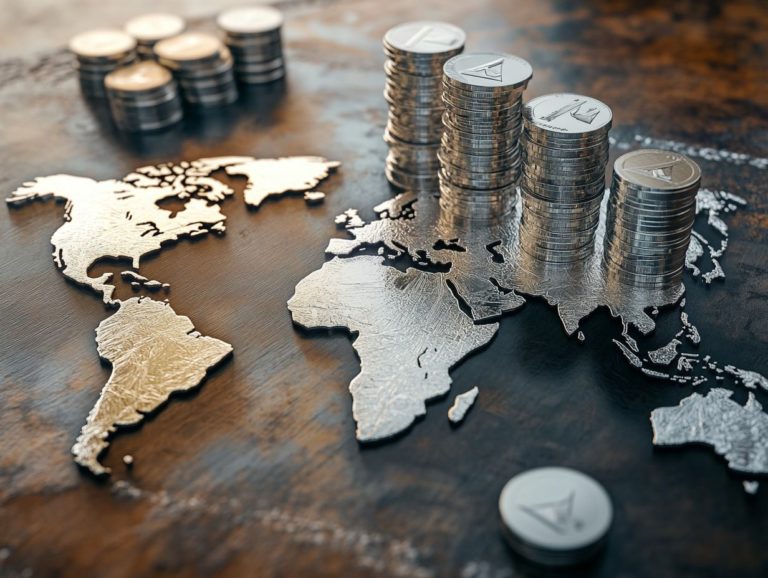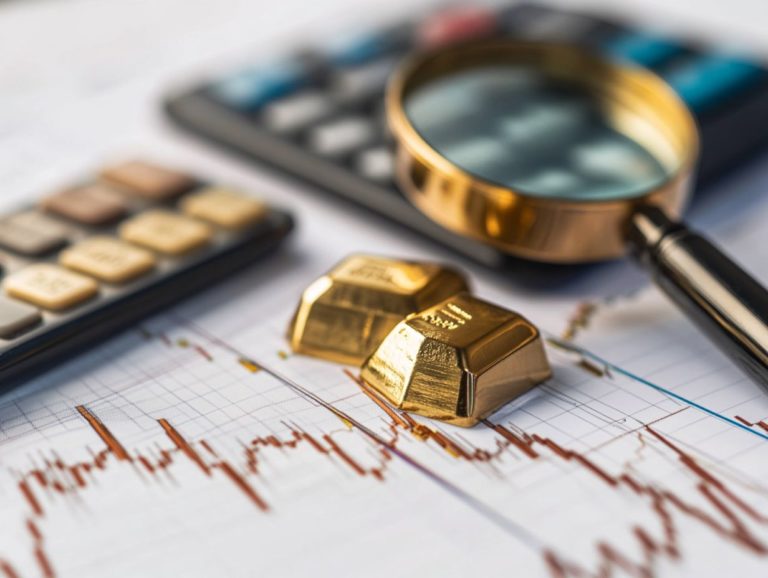Understanding Precious Metal ETFs: Pros and Cons
Precious Metal ETFs (Exchange-Traded Funds) are a smart way to gain exposure to valuable commodities such as gold, silver, and platinum without the intricacies of physical ownership.
You ll discover the advantages these funds offer, including enhanced diversification and liquidity, while also considering drawbacks like market volatility and the lack of tangible assets.
By learning how to choose the right ETF and exploring alternative options, you will position yourself to make informed investment decisions within the precious metals market.
Contents
- Key Takeaways:
- What are Precious Metal ETFs?
- Pros of Investing in Precious Metal ETFs
- Cons of Investing in Precious Metal ETFs
- How to Choose the Right Precious Metal ETF
- Alternatives to Precious Metal ETFs
- Frequently Asked Questions
- What are precious metal ETFs?
- What are the pros of investing in precious metal ETFs?
- What are the cons of investing in precious metal ETFs?
- How are the prices of precious metal ETFs determined?
- What are the different types of precious metal ETFs?
- Are Precious Metal Exchange-Traded Funds (ETFs) a Good Investment?
Key Takeaways:
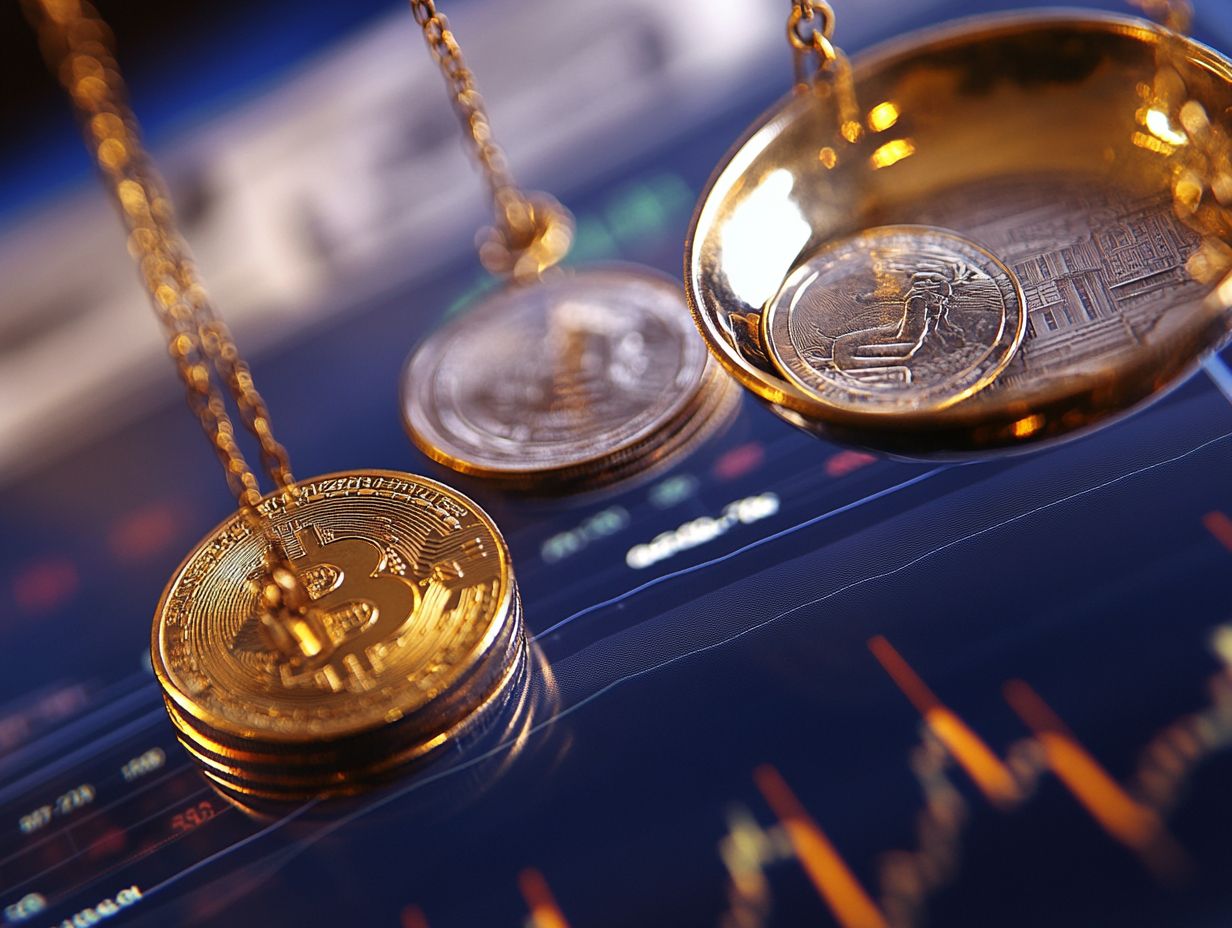
Precious Metal ETFs provide a simple and flexible way to invest in precious metals.
They usually come with lower costs compared to owning physical metals.
Consider market volatility and the absence of physical ownership before investing.
What are Precious Metal ETFs?
Precious Metal ETFs serve as investment vehicles that grant you exposure to the value of physical precious metals such as gold, silver, and platinum without the hassle of direct ownership.
These funds are designed to mirror the performance of the underlying metals, offering you an efficient way to trade these valuable commodities.
With substantial liquidity and easy access, Precious Metal ETFs have gained popularity among both seasoned investors and newcomers eager to diversify their portfolios amidst economic uncertainty.
Definition and Explanation
Precious Metal ETFs allow you to invest in valuable metals like gold, silver, and platinum, traded seamlessly on stock exchanges.
These funds typically hold physical bullion or related instruments, ensuring their value closely tracks the market price of the underlying assets.
By offering a streamlined approach to investing, they provide enhanced liquidity compared to traditional physical purchases.
This means you can buy and sell shares easily, adapting to changing market conditions.
The types of precious metals in these ETFs can vary, featuring popular choices like gold and silver alongside niche options such as palladium or rhodium.
This diversity helps create a balanced portfolio and caters to different risk appetites, making it easier for you to hedge against inflation or navigate economic uncertainty with confidence.
Pros of Investing in Precious Metal ETFs
Investing in Precious Metal ETFs can be a game-changer for your portfolio! These ETFs provide enhanced liquidity, allowing you to easily enter and exit positions.
They also allow you to diversify your portfolio with precious metals such as gold, silver, and platinum. This strategic diversification serves as a robust hedge against inflation and economic uncertainty, providing you with security in fluctuating markets.
Diversification and Liquidity
One of the standout advantages of Precious Metal ETFs is their ability to enhance your portfolio s diversification while offering exceptional liquidity.
By incorporating these ETFs, you gain exposure to commodities like gold, silver, and platinum without the headaches of physical ownership, effectively creating a safety net against market volatility.
The underlying assets generally display low correlations with equities and bonds, which plays a crucial role in reducing your overall portfolio risk.
The high trading volumes associated with Precious Metal ETFs ensure that you can easily buy or sell your holdings, making them an appealing choice for anyone seeking flexibility.
These features not only protect your investments but also enable more strategic asset allocation, optimizing your returns while balancing your risk profile.
Lower Costs and Ease of Trading
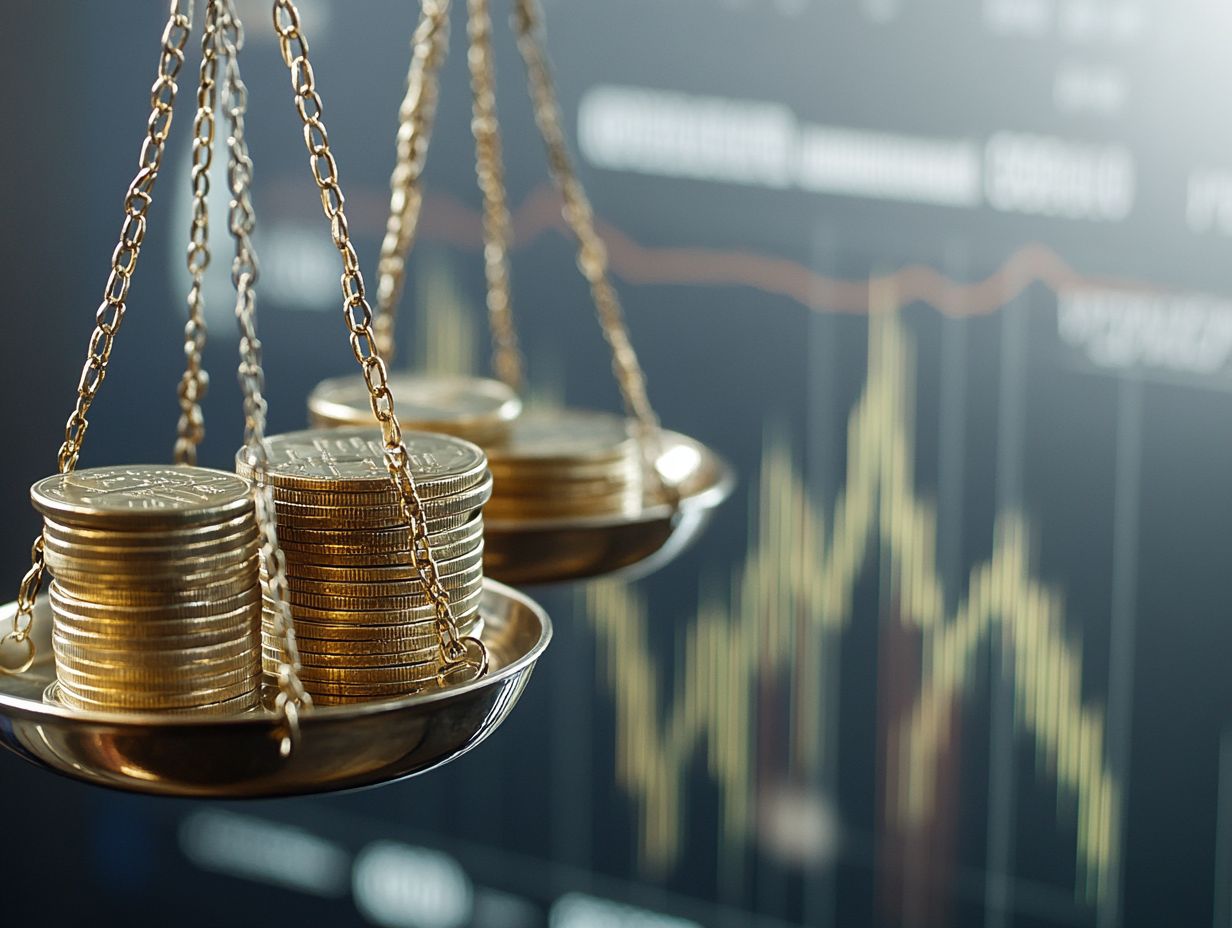
Precious Metal ETFs offer a lower-cost alternative to physical metals. They often have favorable expense ratios and efficient trading mechanisms.
These ETFs also eliminate the need for storage and insurance, giving you better liquidity. You can easily buy and sell shares without the hassle of handling physical bullion.
Market makers ensure a steady supply of shares by matching buyers and sellers. This creates a lively trading environment, while participants help align the fund’s value with the underlying metals.
This system enhances market efficiency, driving down costs and making precious metals more accessible to various investors.
Cons of Investing in Precious Metal ETFs
While there are advantages to investing in Precious Metal ETFs, it’s crucial to know the drawbacks.
Market volatility can be a significant challenge, and tracking errors are also a concern.
You won’t have direct ownership of the metals, which may impact your investment experience.
Market Volatility and Risk
Market volatility poses risks for investors in Precious Metal ETFs. This can affect performance and stability.
Commodity prices can change due to geopolitical tensions, inflation, and shifts in supply and demand. You’ll see how sensitive these investments are to such changes.
When risks rise, many investors retreat to safer assets, leading to sudden sell-offs in ETFs. This behavior can cause larger price swings and reflect general market sentiment.
Understanding risk management is crucial for navigating these ups and downs. This knowledge can empower you to seize opportunities during market fluctuations!
Lack of Physical Ownership
Investors in Precious Metal ETFs face a notable drawback: the lack of physical ownership. This matters more if you re drawn to collectible metals.
Not owning tangible assets can create a sense of vulnerability, especially during economic uncertainty. Unlike bullion or coins, ETFs are more abstract investments.
This abstraction can be troubling for those who value the historical significance of metals like gold and silver. Without physical ownership, you face counterparty risks that can undermine peace of mind.
If safety is a priority for your investment strategy, consider weighing the benefits of owning physical metals against the convenience of ETFs.
How to Choose the Right Precious Metal ETF
Choosing the right Precious Metal ETF requires careful consideration. Examine the ETF’s structure, assess its net asset value, and evaluate its performance to align with your investment strategy.
Factors to Consider
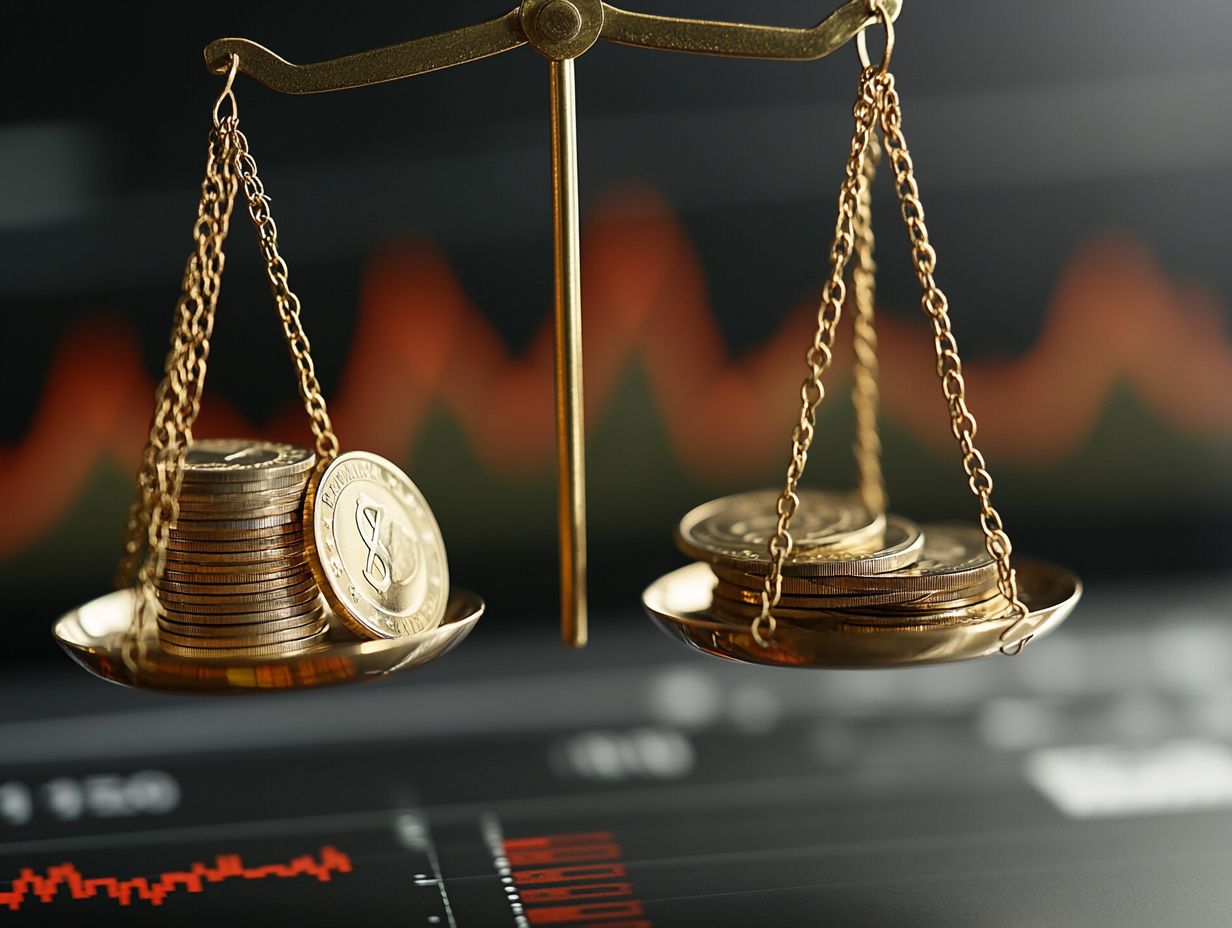
When selecting a Precious Metal ETF, consider essential factors like tracking errors and expense ratios. Think about how well the ETF fits into your overall investment strategy.
It s important to look at what the ETF holds, as its composition can significantly affect performance during market fluctuations. Liquidity is another vital aspect; a more liquid ETF generally enables you to buy and sell quickly without experiencing significant price changes.
Understanding the geopolitical and economic factors that influence precious metals, such as inflation and currency strength, offers valuable insights into potential returns. Ultimately, align your chosen ETF with your personal risk tolerance and investment horizons to create a balanced portfolio, maximizing your chances of achieving financial goals while investing in these tangible assets.
Alternatives to Precious Metal ETFs
If you’re looking to diversify your portfolio with precious metals, explore several alternatives to Precious Metal ETFs. Consider the potential benefits of direct investments in physical assets or acquiring shares in mining companies.
Each option presents unique advantages tailored to your investment strategy.
Other Ways to Invest in Precious Metals
Aside from Precious Metal ETFs, you can explore various methods of investing in precious metals, including purchasing physical assets, collectible metals, or investing in mining ETFs. Each of these approaches has its own advantages and disadvantages that you should consider.
For instance, buying physical assets like gold coins or bullion gives you tangible ownership and can serve as a reliable hedge against economic downturns. However, secure storage and insurance are necessary, which can increase your overall costs.
Collectible metals can yield higher returns if their rarity and demand rise, but they also come with greater risks and require a solid understanding of the market.
Mining ETFs allow you to invest indirectly in the sector by pooling resources from various mining companies, offering a degree of diversification. However, they may also be influenced by broader stock market fluctuations, introducing additional risks.
By understanding these diverse options, you can navigate your investment journey more effectively and align your strategy with your financial goals.
Frequently Asked Questions
What are precious metal ETFs?
Precious metal ETFs, or exchange-traded funds, are investment vehicles that track the price and performance of precious metals like gold, silver, platinum, and palladium. They provide investors exposure to these metals without needing to physically own and store them.
What are the pros of investing in precious metal ETFs?
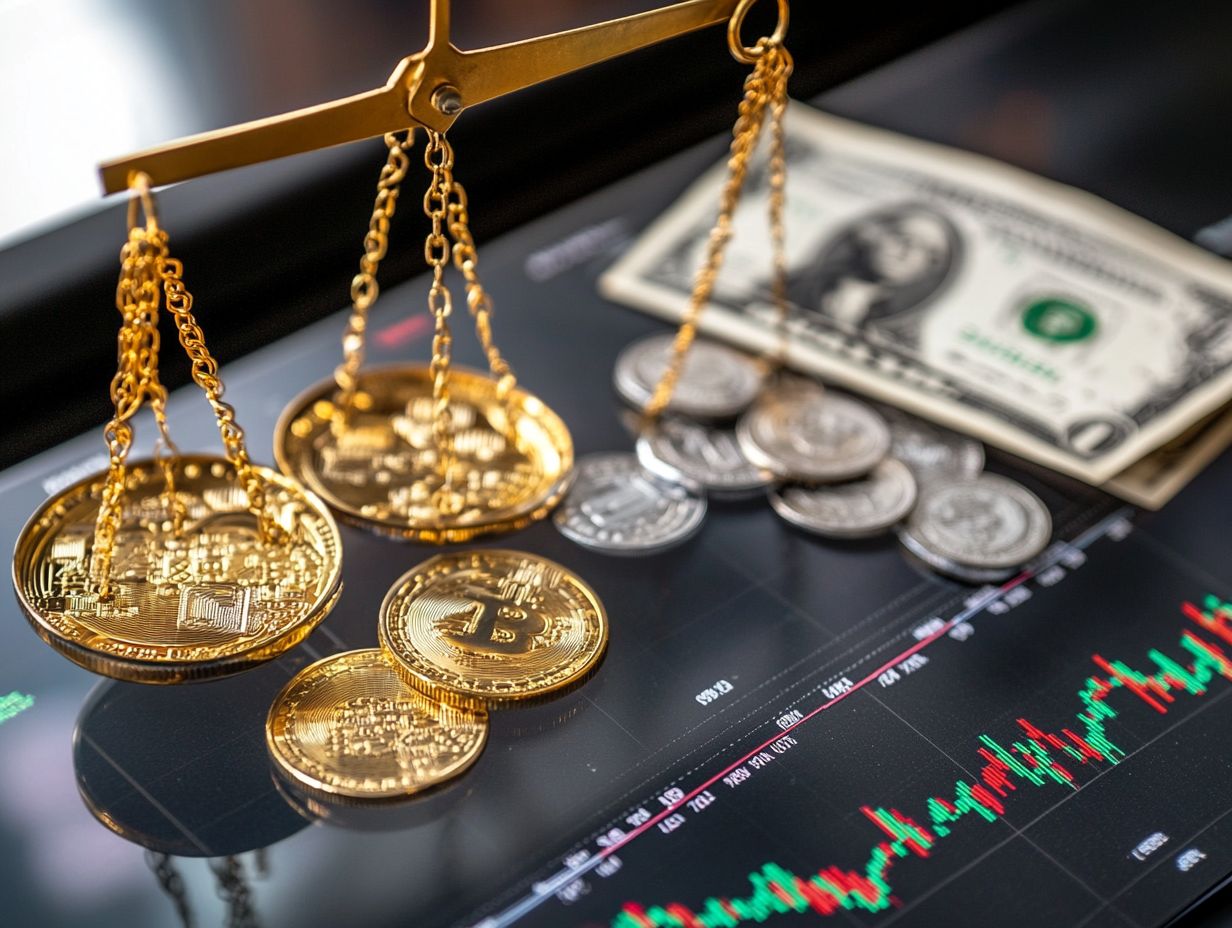
The main advantage of investing in precious metal ETFs is the convenience and ease of trading. ETFs can be bought and sold like stocks, making them a more liquid and accessible investment option. They also offer diversification and hedging benefits since precious metals are considered safe-haven assets during economic uncertainty.
What are the cons of investing in precious metal ETFs?
One potential disadvantage of precious metal ETFs is the fees involved. These can include management fees, trading fees, and brokerage fees. ETFs do not provide direct ownership of the underlying assets, so investors do not have a claim on the physical metal itself.
How are the prices of precious metal ETFs determined?
The prices of precious metal ETFs are typically based on the spot price of the metal they track, adjusted for the fund’s fees and expenses. The ETF’s performance may not exactly mirror the performance of the underlying metal due to these fees and expenses.
What are the different types of precious metal ETFs?
There are two main types of precious metal ETFs: physically-backed and futures-backed. Physically-backed ETFs hold physical metals in a vault, while futures-backed ETFs use derivatives contracts to track the price of the metal. Be sure to research the underlying assets and structure of each ETF before investing.
Are Precious Metal Exchange-Traded Funds (ETFs) a Good Investment?
Your choice to invest in precious metal ETFs should align with your financial goals and risk tolerance. These funds offer diversification and potential growth opportunities.
However, they also come with risks. Take time to explore these risks before investing.
Conduct thorough research. Consulting with a financial advisor can help guide your decisions.

